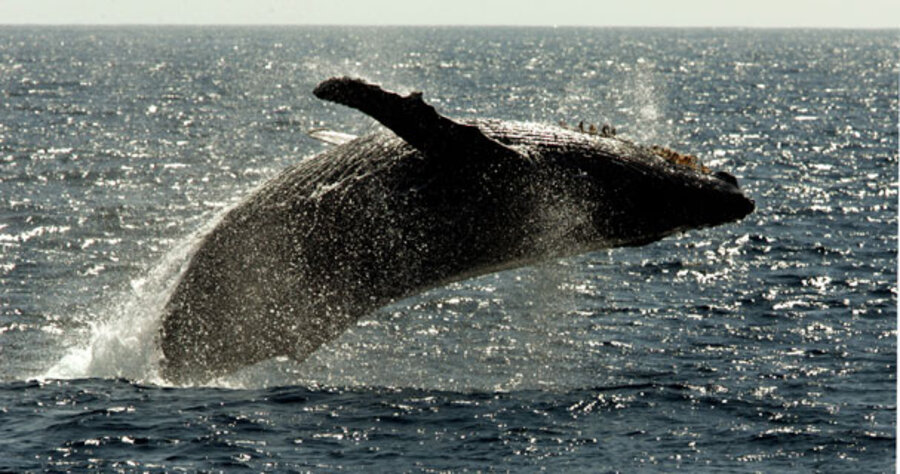A comeback for the humpback
Loading...
The humpback whale, once hunted to the brink of extinction, has staged a dramatic comeback in the North Pacific over the past few decades, a new study shows.
The study, funded primarily by NOAA and conducted by SPLASH (Structure of Populations, Levels of Abundance and Status of Humpbacks), an international organization of more than 400 whale watchers, found that that the overall population of humpbacks has rebounded to approximately 18,000 to 20,000 animals. In 1966, when international whaling for this species was banned, there were only 1,500 humpbacks.
Some isolated populations of humpbacks, particularly those in the Western Pacific, have recovered more slowly and still suffer low numbers.
A press release from NOAA describes how the study was conducted:
Cascadia Research in Olympia, Wash., the central coordinator for the SPLASH project, matched photographs from six different feeding and breeding areas. By matching whale flukes photographed in their feeding areas with those photographed in the wintering areas, researchers were able to determine the patterns of individual whale movements, as well as estimate the sizes of different populations.
In addition to whale fluke photographs, SPLASH researchers collected more than 6,000 biopsy samples for studies of genetics and pollutants, along with thousands of additional photographs to determine how levels of scarring from line entanglement and ship strikes vary among regions. The samples, which are yet to be analyzed, will provide valuable insights into the complex population structure and current threats to further recovery.
The Associated Press spoke with David Mattila, science coordinator of the Hawaiian Islands Humpback Whale National Marine Sanctuary. Mr. Mattila said that the recovery of the whales has been uneven.
At least half of the humpback whales migrate between Alaska and Hawaii, and that population is the healthiest, Mattila said.
But isolated populations that migrate from Japan and the Philippines to Russia are taking a longer to recover after whaling operations ceased, he said.
"Whales are long-lived and give birth one at a time .... so if the population gets pushed too low, it may take quite awhile to come back. Maybe that's what's happening in the west," Mattila said.





